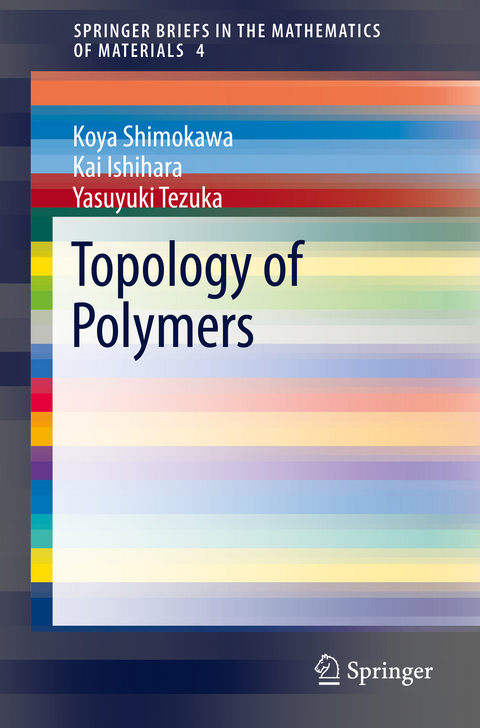
Topology of Polymers
Springer Verlag, Japan
978-4-431-56886-5 (ISBN)
These developments now offer unique opportunities in polymer materials design to create unique properties and functions based on the form, i.e., topology, of polymer molecules. The introduction and application of topological geometry (soft geometry) to polymer molecules is a crucial requirement to account for the basic geometrical properties of polymer chains uniquely flexible in nature, in contrast to small chemical compounds conceived upon Euclidian geometry (hard geometry) principles. Topological geometry and graph theory are introduced for the systematic classification and notation of the non-linear constructions of polymer molecules, including not only branched but also single cyclic and multicyclic polymer topologies. On that basis, the geometrical–topological relationship between different polymers having distinctive constructions is discussed. A unique conception of topological isomerism is thus formed, which contrasts with that of conventional constitutional and stereoisomerism occurring in small chemical compounds.
Through the close collaboration of topology experts Shimokawa and Ishihara and the polymer chemist Tezuka, this monograph covers the fundamentals and selected current topics of topology applied in polymers and topological polymer chemistry. In particular, the aim is to provide novel insights jointly revealed through a unique interaction between mathematics (topology) and polymer materials science.
Topology meets polymers: Introduction.- Graph theory analyses of polymers.- Classification of polymer topologies based on alkane molecular graphs.- Types of graphs.- Knot theory analysis of polymers.- Topological operations and chemical isomerism of polymers.- Topological polymer chemistry and graph-structure construction.- Topology meets polymers: Conclusion and perspectives.
“It can also be read by anyone interested in a brief and compact review or reminder of the main notions or the basic results in those two fields. … this short and readable book is a laudable attempt to achieve an inter-disciplinary transfer of knowledge from mathematics to chemistry.” (Malte Henkel, zbMATH 1469.82002, 2021)
| Erscheinungsdatum | 31.12.2019 |
|---|---|
| Reihe/Serie | SpringerBriefs in the Mathematics of Materials ; 4 |
| Zusatzinfo | VIII, 81 p. |
| Verlagsort | Tokyo |
| Sprache | englisch |
| Maße | 155 x 235 mm |
| Themenwelt | Mathematik / Informatik ► Mathematik ► Geometrie / Topologie |
| Mathematik / Informatik ► Mathematik ► Graphentheorie | |
| Naturwissenschaften ► Chemie ► Organische Chemie | |
| Technik ► Maschinenbau | |
| Schlagworte | graph theory • knot theory • Polymer (materials) science and engineering • Topological polymer chemistry • Topology (topological geometry) |
| ISBN-10 | 4-431-56886-7 / 4431568867 |
| ISBN-13 | 978-4-431-56886-5 / 9784431568865 |
| Zustand | Neuware |
| Informationen gemäß Produktsicherheitsverordnung (GPSR) | |
| Haben Sie eine Frage zum Produkt? |
aus dem Bereich


